By Professor Christopher M. Holman (University of Missouri at Kansas City School of Law and author of Holman’s Biotech IP Blog)
The Bilski majority characterizes its machine-transformation test as "the governing test for determining patent eligibility of a process under section 101." Under this test, a claim is patent-eligible if (and as applied in Bilski apparently only if): (1) it is tied to a particular machine or apparatus, or (2) it transforms a particular article into a different state or thing." As explained by the Court, the test serves as a proxy for assessing the more fundamental concern – ensuring that the claim does not seek to impermissibly "preempt the use of a fundamental principle." This might make sense in the context of so-called business method patents, where the fundamental principle implicated is typically characterized as an abstract idea or mental process. But it is unclear to what extent this test will prove applicable to patent claims arising out of the life sciences, where patentable subject matter challenges more often allege preemption of a natural phenomena or law of nature, rather than an abstract idea or mental process.
For example, although Bilski states that a process claim is "surely" patent-eligible under section 101 if it complies with the machine-transformation test, this cannot be literally correct with respect to a naturally occurring biological process. Photosynthesis transforms carbon dioxide and water into sugar, and in Bilski the Court specifically points to chemical reactions as the sort of physical transformation that will render a process patentable, but a claim directed to photosynthesis would clearly violate Supreme Court precedent which bars the patenting of natural phenomena.
Bilski acknowledge that the machine-transformation test might require refinement or augmentation in the future, and I think this refinement will likely be necessary when the court addresses patentable subject matter challenges based on allegations that a patent claim preempts a biological natural phenomenon. Three such cases are currently on appeal to the Federal Circuit – Ariad v. Lilly, Classen v. Biogen, and Prometheus v. Mayo. Nevertheless, since for the time being the machine-transformation test is apparently the governing test, it is worth considering how the claims at issue in these case, and some other controversial biotechnology patent claims, might fare under this approach.
Ariad’s claims essentially recite methods of altering the activity of a regulatory protein (NF-kB) in a cell, which would seem to satisfy the transformation prong of the test. This outcome would be consistent with the District Court’s determination that the claims comply with section 101, albeit for an entirely different reason. But Lilly argues (reasonably I think) that the claims wholly preempt the use of a natural biological phenomenon, and since Bilski acknowledges that the machine-transformation test is really just a proxy for weeding out patent claims that preempt "fundamental principles," this argument might prevail even though the claim does recite a physical transformation.
The claims at issue in Classen, on the other hand, are directed to methods for determining an optimal immunization schedule based on comparing the observed incidence of immune-mediated disorders in treatment groups subjected to different vaccination schedules. Determining an immunization schedule does not appear to satisfy either prong of the machine-transformation test. The claims do include an additional step of immunizing patients, but under Bilski this step would likely be classified as "insignificant extra-solution activity." For example, the majority particularly points to data collection steps as insufficient to render patentable a claim that is essentially directed to a process of analyzing the data. Notably, the majority strongly suggests that the inclusion of a data-gathering step in the claim at issue in LabCorp v. Metabolite is insufficient to confer patentability on that claim, the essence of which is directed to the non-tranformative step of observing a correlation between homocysteine and vitamin B levels in a body fluid. In this regard, Bilksi appears to be consistent with the approach suggested by Justice Breyer in his dissent from the Supreme Court’s decision not to decide LabCorp.
Similarly, the claims at issue in Prometheus essentially target observing the level of a drug metabolite in a patient, and based on that observation recognizing that an adjustment in dosage may be required. The claims recite the administration of the drug to a patient and determining the level of metabolite in the patient’s body, but under Bilski these might well be treated as an insignificant extra solution data-gathering steps, analogous to the assay step in the claim challenged in LabCorp. If we disregard these steps, the claims would appear to fail machine-transformation test.
Note that at the core, the reason the claims in Prometheus and Classen might fail the machine-transformation test has little to do with any underlying natural phenomenon, but rather because they preempt an abstract idea/mental process without tying that process to a specific machine or apparatus. In contrast, the challenge to Ariad’s claims is fundamentally different, being based on preemption of a natural phenomenon rather than preemption of an abstract idea that could be implemented mentally without the use of a machine. In my view, the machine-transformation test just does not work for claims such as Ariad’s.
Some of the most controversial biotechnology patents are so-called human gene patents, particularly those relating to genetic diagnostic testing. For example, Myriad has been widely criticized for its perceived aggressive enforcement of patents relating to the BRCA breast cancer genes. Some of these patents broadly claim methods of identifying mutations, with no apparent extra-solution step that transforms a particular article or is tied to a particular machine or apparatus. For example, U.S. Patent No. 5,753,441 claims a "method for screening germline of a human subject for an alteration of a BRCA1 gene which comprises comparing germline sequence of a BRCA1 gene . . . with germline sequences of wild-type BRCA1 gene . . ., wherein a difference in the sequence of the BRCA1 gene . . . of the subject from wild-type indicates an alteration in the BRCA1 gene in said subject.
Similarly, U.S. Patent No. 6,432,644 claims "a method for diagnosing the presence of a polymorphism in human KCNE1 . . . wherein said method is performed by means which identify the presence of said polymorphism . . .."
Arguably, these sorts of claims are merely directed to "comparing" naturally occurring genetic sequences, or "diagnosing" the presence of natural mutations, and lack the significant extra-solution step necessary for patent-eligibility under Bilski.
Finally, note that Bilski in effect treats the patentable subject matter doctrine as a mechanism for policing claim scope, a role more commonly associated with the enablement and written description requirements. For example, the majority points to its earlier decision in Abele as an example where a broad claim is invalid for encompassing patent-ineligible subject matter, but an appropriately narrowed dependent claim complies with Section 101. Similarly, genetic diagnostic testing claims might be fine if limited to a specific test or tests, but patent-ineligible if drafted so broadly as to effectively encompass any method for observing a genetic variation.
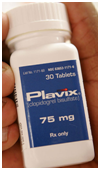
 This decision is nothing new. Broad claims must either be supported by multiple embodiments or some general principles describing how the single embodiment is applicable to other configurations. Failing that, a broad claim may fail the enablement prong. As seen here, even when enabled, a broad claim without sufficient support will be invalid under the written description requirement.
This decision is nothing new. Broad claims must either be supported by multiple embodiments or some general principles describing how the single embodiment is applicable to other configurations. Failing that, a broad claim may fail the enablement prong. As seen here, even when enabled, a broad claim without sufficient support will be invalid under the written description requirement. 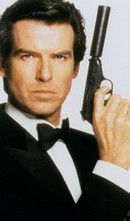 The patent laws promote an early filing doctrine.
The patent laws promote an early filing doctrine. 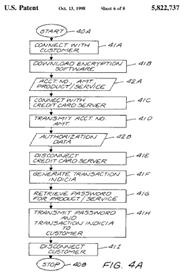 Net MoneyIn v. Verisign (
Net MoneyIn v. Verisign (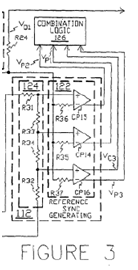 Technology Licensing Corp v. Videotek (
Technology Licensing Corp v. Videotek (
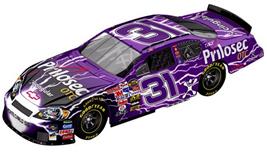 In re Omeprazole Patent Litigation (
In re Omeprazole Patent Litigation (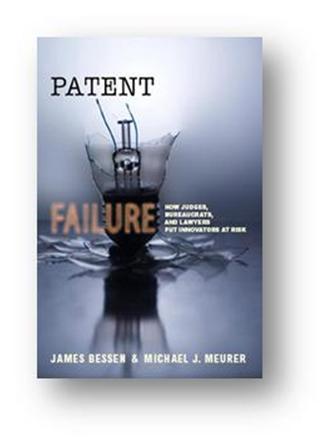
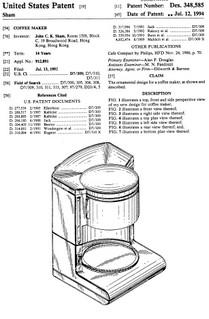 Deferred Examination I: For the current state of PTO backlog, I am a strong believer in providing a mechanism to either (i) allowing the inventor pay to move to the front of the examination line if the patent needs to be obtained quickly or (ii) allowing the inventor to delay prosecution if it is unclear whether the invented technology will have any market value. There are some potential negative issues of allowing deferred prosecution — particularly the potential for submarining and shifting claim scope to encompass market changes. These problems would largely be limited through early publication of deferred applications as well as continued enforcement of the written description and enablement requirements. In addition, the patent term should continue to run during deferment.
Deferred Examination I: For the current state of PTO backlog, I am a strong believer in providing a mechanism to either (i) allowing the inventor pay to move to the front of the examination line if the patent needs to be obtained quickly or (ii) allowing the inventor to delay prosecution if it is unclear whether the invented technology will have any market value. There are some potential negative issues of allowing deferred prosecution — particularly the potential for submarining and shifting claim scope to encompass market changes. These problems would largely be limited through early publication of deferred applications as well as continued enforcement of the written description and enablement requirements. In addition, the patent term should continue to run during deferment. 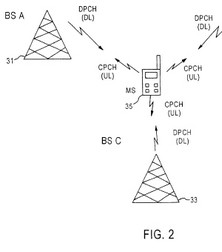 Golden Bridge Tech. v. Nokia and Lucent Tech. (
Golden Bridge Tech. v. Nokia and Lucent Tech. ( Sitrick v. Dreamworks (
Sitrick v. Dreamworks (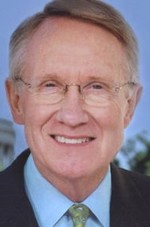 Majority Leader Harry Reid Plans to Move Quickly on Patent Reform: In the first work period of the Senate, Reid intends to move on patent reform (after handling the defense appropriations bill and economic stimulus). “Once we work these issues out, time permitting, we will also turn to two other priorities in this first work period: patent reform and an energy package.” Perhaps appropriately, Reid’s concept of invention is tied-up with entrepreneurs: “On patent reform, we must carefully strike the right balance with a bill that promotes rather than blocks innovation from enterprising entrepreneurs.” In Reid’s view, the bills should have become law in 2007: “If not for the obstruction of just a few Senators, we would have passed these bills last year. I am hopeful that the overwhelming majority of Senators – Democrats and Republicans alike – will have their voices heard this year.” [
Majority Leader Harry Reid Plans to Move Quickly on Patent Reform: In the first work period of the Senate, Reid intends to move on patent reform (after handling the defense appropriations bill and economic stimulus). “Once we work these issues out, time permitting, we will also turn to two other priorities in this first work period: patent reform and an energy package.” Perhaps appropriately, Reid’s concept of invention is tied-up with entrepreneurs: “On patent reform, we must carefully strike the right balance with a bill that promotes rather than blocks innovation from enterprising entrepreneurs.” In Reid’s view, the bills should have become law in 2007: “If not for the obstruction of just a few Senators, we would have passed these bills last year. I am hopeful that the overwhelming majority of Senators – Democrats and Republicans alike – will have their voices heard this year.” [ Comments for Japanese Patent Office: The JPO recently established a Policy Committee and have a schedule to recommend JPO policy changes in a report in April/May 2008. The Committee has generated broad goals of (1) a global system; (2) a predictable system; and (3) a system that promotes both creation and utilization. Comments on the goals and potential solutions are requested by Feb 25 (Japan time). [
Comments for Japanese Patent Office: The JPO recently established a Policy Committee and have a schedule to recommend JPO policy changes in a report in April/May 2008. The Committee has generated broad goals of (1) a global system; (2) a predictable system; and (3) a system that promotes both creation and utilization. Comments on the goals and potential solutions are requested by Feb 25 (Japan time). [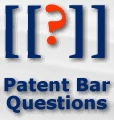 Patent Bar Exam: Patent Agent Alex Nix has created an excellent wiki to help those studying for the Patent Registration Exam:
Patent Bar Exam: Patent Agent Alex Nix has created an excellent wiki to help those studying for the Patent Registration Exam: